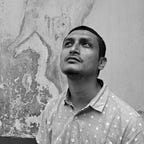The bestseller conundrum in Indian publishing
If you’re a reader, you’ll have noticed that in India, there isn’t a clear definition of what a bestselling book means. Sure, there are some clear leaders: the Chetan Bhagats, the Amish Tripathis, the Devdutt Pattnaiks, the Dan Browns. But why does The Asian Age carry one set of books as its weekly bestseller, while Hindustan Times has a different set of books, and Amazon.in features another bestseller list? And what makes a book a bestseller in India?
The answer to the first query is clear: each bestseller list is collated on the basis of different datasets.
At the bottom of the Asian Age Fiction bestseller list (on the left) is a small notice that reads: Bahrisons, New Delhi. This implies the list of books has been supplied by the venerable bookshop that is almost an institution in Delhi.
In Hindustan Times, the data is provided by Nielsen-Bookscan, the only quantitative dataset we have on the entire Indian book industry:
Then there’s Amazon, whose bestseller list is based on its own algorithms, and constantly checks for actual book sales, and historical data analysis, to come up with a bestseller chart:
Between these three, which one should you trust?
Like with most things books, there’s no simple answer.
If you’re looking at sheer numbers alone, the most quantitatively accurate data will come from Nielsen-Bookscan, which covers online sellers like Amazon and Flipkart and physical booksellers like Crossword. Even then, industry estimates suggest the Bookscan covers about 60 to 70% of the trade book market (Edit: Nielsen India’s director Vinod Mathur says, ‘Nielsen covers 40%-45% of the English trade book market in the country.’) . So it’s not a comprehensive figure, but it should give you a fair idea of how many copies a book has sold in a year. Bookscan doesn’t release numbers here in India unless you subscribe to its services, but get your hands on Bookseller magazine, which prints fortnightly numbers from Bookscan from across the world.
Amazon rankings are based on their own site sales and — considering it accounts for as much as 40 to 50% of sales for most books, and sometimes even more (unlike mass market books that are available even in the smallest of stores) — can be a reasonably accurate measure of how well a book has done in India. Remember, reviews are not taken into consideration in the rankings; it’s pure sales.
The third, that of individual booksellers, is a more limited dataset, for obvious reasons. But it’s also a reflection of the customers that frequent the bookseller. For example, Bahrison’s fiction list quoted above suggests a overwhelming preference for literary titles, with 6 of the top 10 books in that category.
Of course, the most famous bestseller list in the world does not follow any of these rules. The New York Times Bestseller List ‘rankings reflect unit sales reported on a confidential basis by vendors offering a wide range of general interest titles’, but the exact details about the methodology, or the number of stores, remain a trade secret. The list has often been criticised as being misleading, inaccurate and manipulated, and has also been sued by William Peter Blatty, author of The Exorcist, who suggested his book Legion was not included in the bestselling charts.
Now, we come to the second question: What are the numbers a book must sell to qualify as a bestseller in India?
As someone who has worked in Indian publishing previously, I’d say this is a difficult question to assess. Say your sales target was 100,000 copies, and you end up selling 70,000 copies — less than what you wanted, but a significant number nonetheless. Would you consider the book a bestseller? And what about the book that you thought would sell only 5,000 copies, but ends up selling 30,000 copies?
As a commissioning editor, I’d look out for the latter. That’s the breakout hit, an unexpected bonus. A Dan Brown, if it sells less than 100,000 copies, has disappointed. But an Ajay K. Pandey, which sells more than 50,000 copies, is a definite bestseller.
But at the end of the day, it’s all about perception. If you’re a debut author, consider 10,000 copies as your first barrier. You break that barrier, and you’re on your way to bestseller kingdom. This is a tough ask, especially at a time when most novels barely sell more than 5,000 copies!
